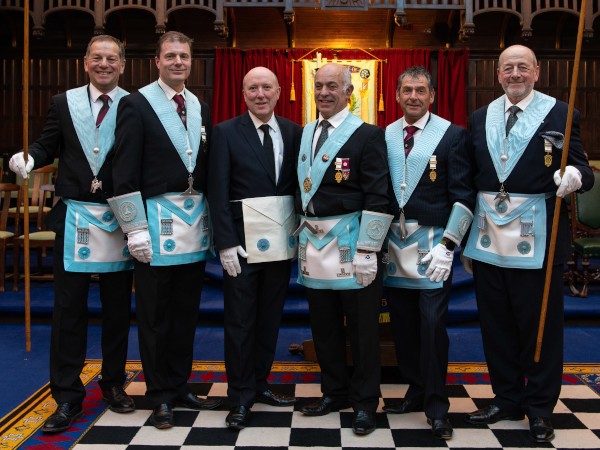The Most Useful Guide to Understanding How to Become a Freemason Step-by-Step
The Most Useful Guide to Understanding How to Become a Freemason Step-by-Step
Blog Article
Exploring the Mysteries of the Freemason: What You Required to Know
The Freemason, a term frequently shrouded in intrigue and dispute, stands for an intricate tapestry of historical reality and modern-day myth. Established in the late 18th century, this secret culture was originally rooted in the Enlightenment's ideals however has actually given that become synonymous with conspiracy theories about elite control. As we browse the origins, crucial numbers, and the raw contrast in between myth and fact, one need to take into consideration how these stories influence modern perceptions of power and privacy. What may be disclosed via a more detailed examination of these components might challenge long-held assumptions concerning the darkness that linger in our culture.
Beginnings of the Freemason
The beginnings of the Freemason are soaked in a mix of historical intrigue and ideological eagerness. Established in 1776 in Ingolstadt, Bavaria, by Adam Weishaupt, the team was at first created as a secret culture aimed at advertising Knowledge suitables such as factor, secularism, and the splitting up of church and state. Weishaupt, a teacher of canon legislation, sought to test the dominating authority of the church and state, which he viewed as overbearing organizations stifling intellectual and personal flexibility.
The Freemason sought to recruit influential participants from various social sectors, consisting of politics, academic community, and the arts, to promote a network dedicated to these Knowledge concepts. The culture run under a shroud of secrecy, using coded language and rituals to secure its members from persecution, specifically given the repressive environment of the time. Nevertheless, the Freemason faced substantial resistance from both governmental authorities and spiritual organizations, which saw the group as a hazard to their power.
Trick Figures and Participants
Who were the crucial numbers that formed the Freemason's early influence and instructions? The Bavarian Freemason, established in 1776 by Adam Weishaupt, emerged as a feedback to the oppressive social frameworks of the time.
Another considerable number was Johann Gottlieb Fichte, a noticeable thinker whose ideas on nationalism and education reverberated with the Freemason's goals. Fichte was not an official member, his philosophical foundations affected the team's ideology. In addition, figures like the writer and theorist Johann Wolfgang von Goethe were linked with the more comprehensive intellectual activities of the moment, although their straight involvement with the Freemason remains discussed.
These key figures added to the Freemason's very early direction, pressing the limits of political and social idea, while their cumulative efforts intended to challenge well established standards and foster an environment of modern modification in Europe.
Myths vs. Fact
Lots of mistaken beliefs surround the Freemason, commonly blending truth with fiction in a way that covers its true nature. The concept that the Freemason proceeds to exert considerable influence over world events is a myth - how to become a freemason.
An additional prevalent misconception is that the Freemason read this article consists of a network of elite individuals controling global affairs. Actually, lots of conspiracy theory concepts exaggerate the group's significance, attributing unproven objectives to social trends and occasions. This has brought about an oversimplified sight of intricate problems.

Modern Analyses
Contemporary analyses of the Freemason frequently mirror more comprehensive societal anxieties and a fascination with privacy and power. This contemporary lens regularly associates the Freemason with conspiracy theories that suggest a covert elite manages globe events, controling federal governments and economies for their own gain. Such stories use a deep-rooted suspect of authority, especially in times of dilemma or social upheaval.

Moreover, some modern interpretations frame the Freemason as an allegory for the intricacies of globalization and the interconnectedness of significant individuals and companies. This viewpoint urges a crucial assessment of just how power characteristics run in today's globe, straight from the source highlighting the equilibrium between transparency and secrecy in administration and company techniques.
Cultural Impact and Legacy
Influenced by centuries of intrigue, the social effect and tradition of the Freemason expand much beyond its historical beginnings. This secret culture, established in the late 18th century, has penetrated different elements of preferred society, from literary works and film to music and art. The concept of the Freemason has actually developed right into an icon of conspiracy theory theories, frequently representing a perceived surprise power additional hints manipulating international events.
In literature, writers like Dan Brown have woven the Freemason right into complex plots, captivating readers with motifs of secrecy and power. Movies such as "National Treasure" and "The Da Vinci Code" better continue the allure of the culture, blending reality with fiction to produce interesting narratives.
The Freemason's impact likewise extends into songs, with artists referencing the company to evoke motifs of rebellion and social critique. This representation has added to a fascination with the idea of private groups controlling the bars of power, mirroring social anxiousness regarding authority and openness.
Eventually, the Freemason's heritage is a complicated tapestry of misconception and reality, forming perceptions of secrecy and control in modern discourse. Its enduring visibility in society highlights humanity's perennial pursuit for understanding covert facts.
Conclusion
The exploration of the Freemason exposes a complex interplay in between historic facts and modern myth-making. Established in the Knowledge era, this society intended to test oppressive structures, yet its tradition has actually been outweighed by conspiracy theories that suggest elite adjustment. Understanding the distinctions between the original suitables and modern analyses is crucial for understanding the sustaining attraction with the Freemason and its significant influence on cultural narratives surrounding power and secrecy in culture.
Report this page